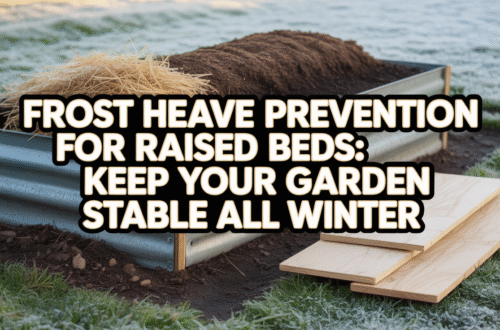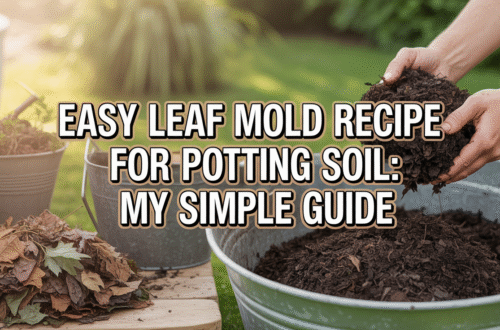Discover the best native ornamental grasses for landscaping! Ashley Scott shares expert tips, top 10 varieties, and care advice for a stunning, sustainable yard.

Hey there, fellow gardening lovers! I’m Ashley Scott, and with over 10 years of digging in the dirt, I’ve fallen head over heels for native decorative grasses. These beauties are not only low-protection and suitable, however they also help neighborhood natural world—think butterflies, birds, and useful bugs. If you’re seeking to transform your yard into a sustainable haven, you’ve come to the proper region. Today, I’m sharing the entirety I’ve learned about native ornamental grasses, from the best sorts to grow within the USA to how they could stage up your landscaping recreation. Let’s dive in!
What Are Native Ornamental Grasses?

So, what exactly are native ornamental grasses? Simply positioned, they’re grasses that obviously develop in a selected place—like North America—and feature tailored to its climate and soil over heaps of years. Unlike unusual or invasive grasses, those natives play satisfactory with the surroundings. They don’t spread like wildfire, and they provide meals and safe haven for neighborhood critters. Plus, their textures and colorings—suppose blues, veggies, and golden colors—upload a wow element to any lawn.
I first stumbled throughout these gemstones once I turned into looking to repair a patchy slope in my backyard. I wanted something hard, pretty, and green. That’s when I discovered prairie dropseed, and it turned into love in the beginning sight! Since then, I’ve been addicted to experimenting with natives throughout my lawn.
Why Choose Native Ornamental Grasses for Landscaping?
You is probably questioning, “Why should I bother with native decorative grasses over the same old suspects?” Here’s why I swear with the aid of them:
- Low Maintenance: They’re difficult as nails and don’t want steady pampering.
- Eco-Friendly: They guide pollinators and birds whilst decreasing water and fertilizer use.
- Year-Round Beauty: From summer season veggies to fall reds and wintry weather seed heads, they preserve your backyard exciting.
- Erosion Control: Perfect for slopes (trust me, I’ve examined this!).
Take my neighbor’s backyard, as an example. She used to conflict erosion each spring until I counseled large bluestem. Now, her slope’s stable, and she gets compliments all year lengthy!
Ready to explore the great alternatives? Let’s test out my top selections for local ornamental grasses that’ll thrive on your US garden.
Top 10 Native Ornamental Grasses for Your Garden
Here’s my curated list of the 10 great local decorative grasses, primarily based on a decade of trial and error. I’ve protected growing recommendations and zones so you can locate the best in shape for your place—whether or not you’re in Texas, Ohio, or California.
1. Prairie Dropseed (Sporobulus heterolepis)

- Why I Love It: Fine, arching leaves and a popcorn-like fragrance—yes, absolutely!
- Growing Conditions: Full solar, dry to medium soil.
- Size: Up to four feet tall, 2 toes wide.
- Zones: three-eight (excellent for Michigan, Ohio, or New York).
- Pro Tip: Plant it near walkways to revel in its perfume. Check out my full manual on beginning seeds interior for propagation pointers!
2. Little Bluestem (Schizachyrium scoparium)

- Why I Love It: Blue-green summer season foliage turns reddish in fall—stunning!
- Growing Conditions: Full solar, dry to medium soils.
- Size: Up to 4 toes tall, 1 foot wide.
- Zones: 3-10 (perfect for North Carolina or Florida).
- Pro Tip: Give it area to shine—it flops in wealthy soil.
3. Sideoats Grama (Bouteloua curtipendula)

- Why I Love It: Quirky seed heads hang like embellishes.
- Growing Conditions: Full sun, dry to medium soils.
- Size: 2 feet tall and extensive.
- Zones: 3-nine (best for Maryland or Virginia).
- Pro Tip: Deer-resistant and a butterfly magnet!
4. Blue Grama (Bouteloua gracilis)

- Why I Love It: Eyebrow-fashioned seed heads and golden fall colour.
- Growing Conditions: Full solar, medium to dry soils.
- Size: Up to two ft tall and huge.
- Zones: 3-10 (thrives in Colorado or Texas).
- Pro Tip: Drought-tolerant—wonderful for decent summers.
5. Tufted Hairgrass (Deschampsia cespitosa)

- Why I Love It: Fine, feathery seed heads and colour tolerance.
- Growing Conditions: Partial color, medium to moist soils.
- Size: Up to a few ft tall, 2 toes extensive.
- Zones: 4-eight (works in New England or Missouri).
- Pro Tip: Don’t mistake it for a weed in past due iciness!
6. Indiangrass (Sorghastrum nutans)

- Why I Love It: Tall, golden seed heads that glow in fall.
- Growing Conditions: Full sun, medium to dry soils.
- Size: Up to 6 ft tall, 2 feet extensive.
- Zones: three-nine (loves Tennessee or Nebraska).
- Pro Tip: Deer-resistant and drought-hardy.
7. Big Bluestem (Andropogon gerardii)

- Why I Love It: Turkey-foot seed heads and red-bronze fall color.
- Growing Conditions: Full solar, wet to dry soils.
- Size: Up to 8 feet tall, 2 feet wide.
- Zones: 3-9 (excellent for Iowa or Minnesota).
- Pro Tip: A skipper butterfly favorite—leave it standing for iciness flora and fauna.
8. Switchgrass (Panicum virgatum)

- Why I Love It: Airy flora and versatile colours.
- Growing Conditions: Sun to mild color, moist to dry soils.
- Size: Up to six toes tall, 2 feet huge.
- Zones: three-8 (fits New Jersey or Ontario).
- Pro Tip: Watch for spreading in wealthy soil—keep it in take a look at.
9. Northern Sea Oats (Chasmanthium latifolium)

- Why I Love It: Bamboo-like leaves and oat-like seed heads.
- Growing Conditions: Full sun to component colour, properly-drained soil.
- Size: Up to 4 ft tall, 2 feet huge.
- Zones: four-nine (best for California or UK gardens with similar climates).
- Pro Tip: Can self-seed, so snip spent heads if wished. Pair it with Hosta Bleuphoria for a shady combo!
10. Deergrass (Muhlenbergia rigens)

- Why I Love It: Evergreen with buff-colored flora.
- Growing Conditions: Full sun to partial shade, properly-drained soil.
- Size: three feet tall and extensive.
- Zones: 7-9 (ideal for Texas or Florida).
- Pro Tip: Drought-resistant and coffee fuss.
Where to Buy Native Ornamental Grasses
Looking for native decorative grasses for sale? I’ve were given you included! Here are my go-to spots:
- Local Nurseries: Check for region-precise natives (e.G., Ohio, Maryland, or California).
- Online Retailers: Sites like Prairie Moon Nursery or High Country Gardens deliver national.
- Garden Shows: Great for finding specific sorts and chatting with growers.
Last spring, I snagged some little bluestem from a nearby nursery in my metropolis, and it’s been thriving ever when you consider that. Supporting nearby growers feels suitable, too!
How to Use Native Ornamental Grasses in Landscaping
Wondering how to work these grasses into your yard? Here’s what’s labored for me:
- Borders: Use shorter grasses like prairie dropseed to area paths.
- Focal Points: Tall large bluestem or indiangrass draw the eye.
- Erosion Control: Plant switchgrass on slopes—see my erosion manage guide for extra!
- Wildlife Gardens: Pair with native flowers to attract pollinators.
In my front yard, I’ve were given northern sea oats swaying close to the porch—it’s like a dwelling wind chime. Mix and healthy heights and textures for a herbal vibe!
Caring for Native Ornamental Grasses
Good information: these grasses are low-drama. Here’s my care ordinary:
- Watering: Minimal as soon as set up—nature does most of the work.
- Pruning: Cut lower back in overdue winter or early spring before new increase.
- Soil: They decide on lean, properly-tired situations—bypass the heavy fertilizer.
I found out the hard way that overwatering blue grama makes it sulk. Less is more with natives!
Common Questions About Native Ornamental Grasses
Are Native Ornamental Grasses Invasive?
Nope! Unlike a few exceptional grasses, natives like sideoats grama live positioned. Switchgrass and northern sea oats can spread in ideal situations, but a short trim keeps them tame.
Which Grasses Are Best for My State?
- Texas: Try deergrass or blue grama.
- Michigan: Go for prairie dropseed or tufted hairgrass.
- Florida: Big bluestem or switchgrass shine here.
Do They Attract Wildlife?
Yes! Birds love the seeds, and butterflies use them as larval hosts. My indiangrass is a hen buffet all winter.
Final Thoughts: Why I’m Obsessed with Native Ornamental Grasses
After 10 years of gardening, native ornamental grasses have become my secret weapon. They’re tough, beautiful, and kind to the planet—what’s not to love? Whether you’re in New York, Missouri, or Colorado, there’s a native grass waiting to transform your space. Start small with prairie dropseed, or go bold with big bluestem—either way, you’ll be hooked.
Got questions? Drop them below, or visit USA Garden Hub for more gardening goodies. Happy planting, friends!





7 Comments on “Native Ornamental Grasses: Top Picks for Eco-Friendly US Gardens”